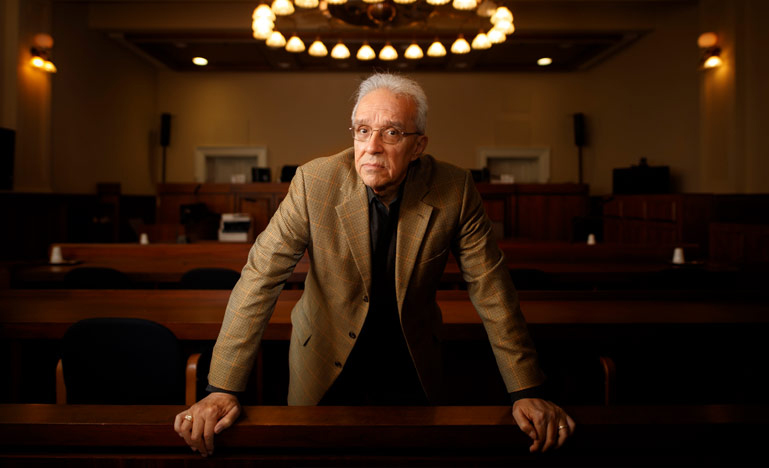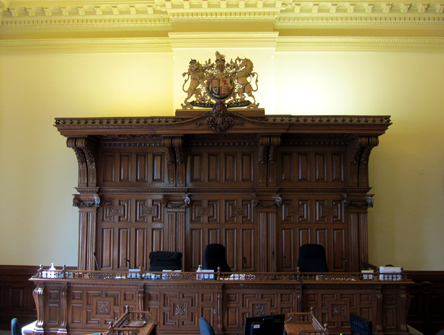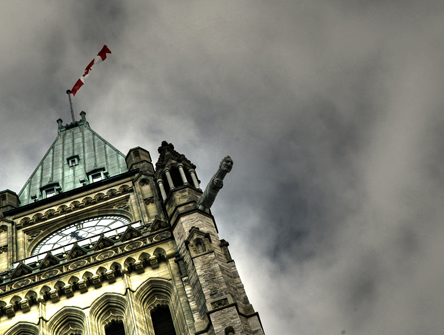What are we looking for in our judges?
The application process is a big part of the reason why the quest for greater judicial diversity remains so elusive.

Back when Harry LaForme was still serving on Ontario’s Court of Appeal — the only Indigenous justice working at that level in Canada at the time — the federal government came to him for help.
Could he recommend some solid candidates for judicial appointments — people who could help the federal government work toward its long-term goal of boosting racial and cultural diversity on the bench?
Most of the lawyers he recommended never applied. Stymied by an application process they saw as biased toward the “right” candidates — those who went to the right schools, argued the right cases and schmoozed the right people — they took a pass.
“Almost everyone I recommended for appointments, I called them afterwards and they told me, basically, ‘Why would I even bother?’” says LaForme, now a senior counsel with Olthuis-Kleer-Townshend in Toronto. “There’s a lot of that going on.”
The quest for greater judicial diversity has been a political talking point in this country for years. The Trudeau government came to power in 2015 vowing to make the bench better reflect Canadian society, and even established a new judicial application process in 2016. Ottawa has made some progress since, but many people in the profession think it’s not moving far enough, fast enough.
The reasons may come down to the application process itself — and some lingering confusion over what “diversity” on the bench actually means.
Indra Maharaj, a Calgary-based lawyer who chairs the Canadian Bar Association’s judicial issues subcommittee, has concerns with the questionnaire that accompanies the federal application process.
Running to 25 pages, the questionnaire asks applicants to describe, at length, their contributions to the administration of justice in Canada — their legal publications and factums, the cases they argued before appeal courts or the Supreme Court itself. Candidates are asked to list their teaching, pro bono and volunteer work. And they’re asked to describe the cases they argued that made a “significant” contribution to the law.
The risk, says Maharaj, is that the process might not recognize candidates from smaller firms, practitioners in rural communities who don’t share the opportunities to make professional contacts enjoyed by their urban colleagues, or specialists in areas of law that tend not to feature much in appeal work. If making the bench more diverse still means appointing people from the same backgrounds and sharing the same experiences and perspectives, she says, how is true diversity being achieved?
“It’s not just about racial diversity. It’s about experience and empathy,” she says.
“The challenge is that not every lawyer who looks the same has the same life experience. The goal is to appoint a bench that truly reflects the diversity of Canadians, their perspectives and lived experiences.”
According to Anita K. Atwal, director of the South Asian Bar Association of B.C., even the requirement in B.C.’s provincial court application process to list five judges as references can tilt the playing field away from minority candidates. They may have fewer professional and personal connections with the judiciary than those from more privileged backgrounds.
“Listing five judicial referees on your application is a good example of a seemingly neutral requirement that likely disproportionately prejudices minority candidates,” she says.
Particularly pernicious, said Maharaj, is the emphasis in the federal questionnaire on “significant” legal work. “If you’re a lawyer in a general legal practice, what does significant mean to you when applied to your work?” she asks.
“How do you weigh the significance of an outcome in a case that changes an individual client’s life against a case that may or may not affect a process for a group of people? Significance is in the eye of the beholder.”
If the quest for “significance” implies a bias toward candidates with a lot of high-profile appeal work under their belts, says Raphael Tachie, president of the Canadian Association of Black Lawyers, it also implies a bias towards candidates with wealthy clients.
“The law that makes its way to the Supreme Court of Canada is the law that is being pushed forward by people with deep pockets,” says Tachie, senior counsel with T.D. Bank group.
“What this process is designed to do is to find applicants who could one day serve on the Supreme Court,” says LaForme. “But the idea the process has of what makes a good judge — the papers, the high-profile cases, the significance — isn’t the same as what the community seeks in a judge at all.
“It’s not about schmoozing the bar association or arguing before a high appeal court. It’s about understanding the community you’re serving.”
LaForme sees a bias against Indigenous practitioners in the volume of paperwork involved in the application process. “I don’t think the people evaluating judicial applicants understand just how complex an Indigenous law practice can be,” he says. “And a lot of it is so new; it lacks precedent.
“Indigenous law practices tend to be very work-intensive and time-consuming and tend not to be very lucrative. It’s not like the average Indigenous practitioner can afford to take a week off to apply to become a judge. And it’s a lot of personal stuff, so it’s not like they can get a paralegal to do it.”
Tachie said the convention that says Supreme Court judges must be bilingual sends a clear signal to lawyers who live and work in Indigenous languages that they’re not welcome at the higher levels.
“There’s a privilege implied, unless you’re from Quebec,” he says. “It means you end up selecting almost exclusively from a certain educational and social level, where the education, experiences and attitudes are broadly similar.”
Many lawyers say the consequence of all this is that candidates who would make great judges end up dropping out of the process before they even start. Critics of the application process say it’s up to the federal government to fix the problems — by shortening the process, de-emphasizing the significance of “significant” work and adding an interview component to allow applicants to describe their contributions to the law in their own words.
Senior lawyers can help by mentoring their colleagues through their careers and encouraging strong candidates for the bench to apply, Maharaj says.
But in the end, the strategies that might help lawyers successfully navigate the application process could also point them away from lower-profile — but still important — legal work. Joshua Sealy-Harrington, a Black assistant professor at the Lincoln Alexander School of Law, says “the onus should be on the state to revise the criteria.”
“Members of underrepresented groups always find themselves in a double-bind,” he adds. “They can assimilate to the norms implied in the application process — the right schools, the right firms — and that might work for them.
“But they may in the process be abandoning the kinds of careers that would be meaningful to them.”


